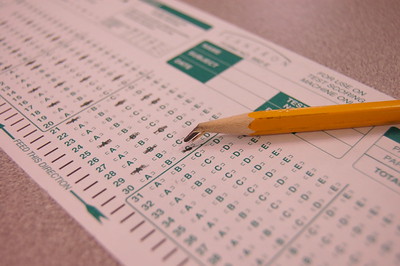So, the 2023 SAT scores are out, as are scores from the other college readiness test, the ACT. The news isn’t great, if you’re a fan of standardized testing. According to the College Board, this year’s SAT test takers scored worse than any cohort since they reformulated the test in 2016. ACT test-takers notched a 30-year low.
While some people argue that the test result merely quantify what educators already know: the pandemic has had a lasting, negative impact on the college readiness of high school students. Others speculate that many institutions have not returned to their policies of requiring standardized test scores as part of a prospective student’s application package. When institutions don’t require test scores, the pressure to perform is off, and students are less invested in their ACT and SAT scores.
Both of those hypotheses might be true, but if the tests reflect a genuine lack of college readiness, then the scores also represent a big opportunity for community colleges at just the right time.
In case you’re wondering, Michigan students tested themselves into the 7th worst SAT results among students from all states. Sitting at a cool 44th, few Michigan students demonstrated actual college readiness. At the same time, Michigan – like all other states – is approaching that “enrollment cliff” caused by declining birth rates during the Great Recession.
Experts say that means fewer college-age students will enroll in post-secondary programs. At the same time, Generation Z is about as big as the Millennial generation and nearly as big as the Baby Boomer generation. In other words, the population isn’t the problem; the number of students interested in going to college is.
A short, intensive program to improve college readiness
Gen Z students are notoriously unwilling to take on educational debt. A third potential hypothesis regarding college readiness just might be that Gen Z students knew they were unlikely to go to college because they weren’t willing to finance it, so they put less effort into college preparation in high school.
So, the root causes of the post-secondary enrollment decline may include high cost, limited readiness, and in the case of the community college, low return on investment.
The opportunity is the development of a one-year intensive program that boosts college readiness in math, science, reading, and writing, along with soft skills the students will need to succeed in a four-year environment. The program could enroll high-school age students who want to apply for college but lack academic readiness. It could also appeal to recent high school graduates who either didn’t apply to school or didn’t gain admission to their preferred institution.
Paired with services that assist program participants in getting grant-based financial aid and provide admissions or transfer services, community colleges could create a viable transfer pipeline filled with students who are prepared to succeed in a four-year environment.
Photo Credit: Josh Davis , via Flickr
















